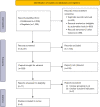Effects of therapeutic hypothermia on the safety of children with severe traumatic brain injury: a systematic review and meta-analysis
- PMID: 35800261
- PMCID: PMC9253942
- DOI: 10.21037/tp-22-180
Effects of therapeutic hypothermia on the safety of children with severe traumatic brain injury: a systematic review and meta-analysis
Abstract
Background: Therapeutic hypothermia (TH) is effective to treat adult traumatic brain injury (TBI), but there is still controversy about its safety to treat the children with severe TBI.
Methods: Clinical studies on TH in children with severe TBI from January 2000 to September 2020 were screened in PubMed, Web of Science, Embase, Cochrane Library, Nature, NCKI, and Wanfang online databases. Data were meta-analyzed by Rev Man 5.3. Differences in mortality, adverse outcomes, duration of Pediatric Intensive Care Unit (PICU), incidence of infection, and incidence of arrhythmia were compared between experimental group and control group. The heterogeneity of the results was evaluated by chi-square test and I2 test in Rev Man 5.3, and publication bias was evaluated by funnel plot.
Results: Five articles were included, including 421 children. Cochrane evaluation was B grade or above, and Jadad scale score was over three points. The overall mortality between two groups showed great difference [odds ratio (OR) =1.72, 95% CI: 0.98-3.02, Z=1.87, P=0.04]. The incidence of adverse outcomes (OR =1.39, 95% CI: 0.86-2.25, Z=1.34, P=0.18), the duration of PICU [mean difference (MD) =0.51, 95% CI: -0.33 to 1.35, Z=1.19, P=0.24], the incidence of infection (OR =0.79, 95% CI: 0.51-1.23, Z=1.03, P=0.30), and the incidence of arrhythmia (OR =3.10, 95% CI: 0.77-12.50, Z=1.59, P=0.11) were not considerably different.
Discussion: TH significantly reduced overall mortality in children with severe TBI, but did not significantly improve the incidence of adverse outcomes, PICU duration, infection rate, or arrhythmia. These results provided a reference for selecting proper clinical treatment methods for children with severe TBI.
Keywords: Children; meta-analysis; therapeutic hypothermia (TH); traumatic brain injury (TBI).
2022 Translational Pediatrics. All rights reserved.
Conflict of interest statement
Conflicts of Interest: All authors have completed the ICMJE uniform disclosure form (available at https://tp.amegroups.com/article/view/10.21037/tp-22-180/coif). The authors have no conflicts of interest to declare.
Figures













References
LinkOut - more resources
Full Text Sources
